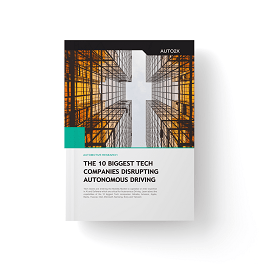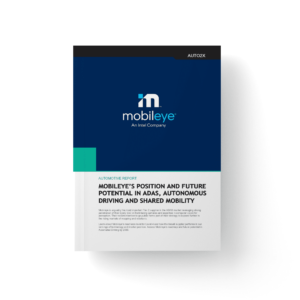Description
Can Bosch continue to lead the ADAS market by 2030?
This report examines Bosch’s strategy and technology capability in ADAS & Autonomous Driving to provide a competitive assessment of their readiness level against other major ADAS Suppliers.
- Learn about the capabilities of Bosch’s portfolio of sensors and features and their roadmap to support Level 3 and Level 4 features in cars and robotaxis.
- Assess Bosch’s position in our “Ranking by ADAS Revenue” vs. Continental and other Tier-1s;
- Understand Bosch’s market shares in 77GHz and 24GHz radar, camera, Lidar, ultrasonics and super-computers in major markets.
The term ‘’ADAS suppliers’’ refers to manufacturers; designers; and/or distributors of hardware components (radar, camera, Lidar, ultrasonic sensors) and/or software for ADAS such as ACC, AEB which we refer to as “ADAS features”.
Bosch will maintain its leadership in ADAS among major Tier-1s but further transformation is needed as competitors close the gap
Bosch, a world-renowned leader in automotive technology, is at the forefront of the autonomous driving revolution. With its cutting-edge ADAS and autonomous driving solutions, Bosch is well-positioned to maintain its market dominance in the years to come.
Auto2x assesses that Bosch overtook Continental in 2019 by global ADAS revenues and maintained this position until 2021. This was attributed to the higher ADAS revenue growth Bosch recorded for the period 2015-2020 (CAGR: 32.9%) comparing to Continental (CAGR 27.7%). In 2019, Bosch sales of ADAS rose by 12% to €2 Billion.
Continental led the ADAS market in 2015-2018 by revenues, mainly by capitalizing on its dominance in the camera market. Bosch followed as 2nd leveraging a strong position in radar and camera which can support Level 1 and L2 features.
As safety & convenience ADAS proliferate in Volume brands in major markets and premium OEMs shift to L3 from 2023, ADAS content will rise significantly. Positioning in camera, radar and lidar is crucial to increase ADAS revenues.
Bosch has recovered from the pandemic but needs re-organization to achieve higher growth trajectory
Bosch is the world’s biggest automotive supplier by revenue. They expect overall sales to grow by 6-9% in 2023, i.e. between €93.5 Billion and €96.1 Billion.
Bosch has fully recovered from the slowdown and disruption caused by the pandemic, with revenues reaching €88.2 Billion in 2022. Even though revenues have surpassed the 2019 level, EBIT in 2022 amounted to €3.5 Billion, still lower than the 2018 level of €5.5 Billion. In 2021, Bosch’s revenues bounced back by 10% to €78.8bn after a turbulent 2020 that saw the whole automotive industry shrink as the coronavirus pandemic compounded the transformational challenges players face. The company saw revenues down by 7.9% in 2020 to €71.6 Billion from €77.7 Billion in 2019, according to its preliminary figures.
The pandemic also affected revenues from ADAS despite the growth in the penetration of driver assistance systems. The rise in ADAS Lv.1 & Lv.2 launches was offset by lower volumes and some delay in the sourcing of ADAS due to the pandemic.
“The rise in ADAS Lv.1 & Lv.2 launches was offset by lower volumes and some delay in the sourcing of ADAS due to the pandemic”
Auto2x
Bosch’s Mobility Solutions division, i.e. the ex-Automotive Technology, includes the company’s ADAS business. It was renamed in 2014 from Automotive Technology. It recorded revenues of €52.5 Billion in 2022, up from €45.3B in 2021. The business sector will be reorganized from January 1, 2024, according the 2022 Annual Report.
Bosch benefits from its global leadership in 77GHz radar sensors for cruising ADAS features and its strong position in camera for L1 and L2 features in Europe, North America and China. Moreover, compared to Continental, it has the most significant share in corner radar in Europe and produces Ultrasonics.
Bosch is well positioned to monetize ADAS demand with a strong and wide portfolio, contracts with leading OEMs and the ability to support driving and parking features for higher levels of automation. Hence, we expect that they will continue to lead the ADAS market and be the ones benefited the most from the transition towards L3-4.
What is the outlook of Bosch in Autonomous Driving?
According to Gerhard Steiger, Bosch Chassis Systems Control Division President, “At Bosch, we have a dual approach. On one hand, we foresee a steady increase in partially automated driving, going from Level 1, to Level 2 to Level 3. This follows the classical business model. On the other hand, we are taking a non-traditional, more Silicon Valley-like approach for our work on the shared autonomous vehicle, or robotaxis.”
The latter refers to the work Bosch is doing with Daimler to enable L4/5 in urban environments, which also resulted in the world’s first infrastructure-based solution for automated valet parking in the Mercedes-Benz Museum parking garage. Bosch also has a strategic partnership with Baidu in China to collaborate on applying connectivity to transport.
Bosch had an aggressive roadmap for automation aiming to deliver its Highway Pilot in 2020. The German supplier aimed at selling lidar in 2020 to meet demand for sensor redundancy in cars delivering high-autonomy. To materialize this product roadmap, the company’s investment in Automated Driving will amount to 4 billion euros by 2022.
Bosch will benefit from the approval of Level 3 Autonomous Driving which increases the Sensor content in vehicles
“Advanced Driver Assistance Steering Systems” assist but do not replace the driver. The driver remains at all times in primary control of the vehicle. Automated steering control by the system has been a regulatory roadblock for Lv.3.
In June 2020, regulators announced that the UNECE regulation Automated Lane Keeping Systems would come into force from January 2021 allowing the deployment of Level 3 in signatory countries. SAE Level 3 systems can take over the driving and monitoring task under specific scenarios allowing the driver to be ‘’distracted’’. But the driver will still be the ultimate back-up and must remain available to regain control within a few seconds of the takeover request. Deployment of Level 3-AD is still subject to regional regulatory approval. What’s more, the regulatory and legal framework differs across leading car markets. This could result in a lack of harmonization and require design variation, adversely impacting the adoption of higher levels of vehicle autonomy.
Even though Audi marketed their first-ever L3-Driving feature since 2017, the AI Traffic-Jam Pilot in the 2018MY A8, they have still not deployed it because they have not been granted regulatory approval and their faced challenges in data validation. After years of delays, finally in 2021, Honda and Nissan launched L3 leveraging the changes in regulation in Japan. BMW, Mercedes-Benz and others follow in 2023 in Germany and specific states in the US.
Level 2-Driving availability increases as more Volume brands launch capabilities creating opportunities to expand the client base
Bosch’s strong position in ADAS radar and camera are crucial to crucial to monetize ADAS as penetration rises
The number of models offering Partially-automated driving capabilities in Europe, as standard or optional equipment, rose with CAGR 50% over the last 5 years to reach more than 100 in 2020. Carmakers are gradually offering higher speed functionality by expanding Cruise Assist (CA) offerings across their model range. Moreover, the number of models offering L2-Parking reached more than 40 in 2020, of which more than 60% offered Self & Remote Parking.
Supercomputers & Lidar will fuel new growth, complementing revenues from radars and cameras
ADAS sensors such as cameras and radar for cruising, parking, and safety ADAS still account for the majority of ADAS sales for major Tier-1s. ADAS suppliers introduced new functionalities in 2020, such as Bosch’s new MPC3 video camera with AI-based object detection.
But 2020 also saw new business lines grow in order intake, among them supercomputers and lidar.
In December 2020, the company announced they received more than €2.5 Billion worth of orders for vehicle super-computers for automated driving in 2020. Its central computers have been on the roads since 2019 to reduce the complexity of electronic systems. Bosch expects that vehicle super-computers will become a multi-billion market growing to €20Bn by 2030.
The company claims its vehicle computers will increase computing power in vehicles by a factor of 1,000 by the start of the next decade enabling autonomous driving, electrification, and connectivity.
Bosch will re-organize its Mobility Solutions division and to strengthen its position in ADAS
Major Automotive Suppliers aim to secure their position as leading providers of automated driving solutions. They are also looking to become providers of Mobility solutions and focus on Software and AI. These forces sparked a strong uptake in the re-organization of ADAS segments of major Suppliers in 2020.
To capitalize on the market opportunity for Automated Driving Software, Bosch created a new division called Cross-Domain Computing Solutions, which started operation in January 2021. The division pulls together the company’s software experts. What’s more, Bosch’s Mobility Solutions business sector will be reorganized from January 1, 2024.
Boschs’s Readiness in Level 4 Autonomous Driving by 2030
There are a number of criteria crucial for suppliers in order to compete in Level 4 Automated Driving. Auto2x examines the availability of technological building blocks for Level 4-Highway, which controls the full-driving tasks without a need from the driver to access transfer of control.
Auto2x’s ranking of Readiness Level in Level 4 Autonomous Driving is based on their competence in three parameters:
In terms of Technology, some of the key domains are:
- Strategy (30% weight)
- Deployment strategy
- Investments
- Partnerships
- Technology (40%): product portfolio and innovation
- Next-gen sensors: Suppliers need a strong portfolio of low-cost, high-performance sensors from 24GHz and 77GHz radar to imaging radar, satellite cameras and solid-state lidar;
- Features for Highway, City, Parking) and safety. Applications vary from passenger cars to Commercial Vehicles.
- Architecture: SOTA updates and Features-on-Demand, e.g. Tesla
- Software Stack: in-house development and strong partnerships with leading Tier-2 suppliers such as NVIDIA
- Validation-Verification and other.
- Market Position (30%)
- Client base
- Revenues
- Geographical growth
Bosch’s success in the autonomous driving market is due to a number of factors, including its strong R&D capabilities, its deep understanding of the automotive industry, and its commitment to innovation. Bosch is also investing heavily in partnerships with other companies, such as automakers and technology companies, to accelerate the development and deployment of autonomous driving technology.
Bosch’s ADAS and autonomous driving solutions are designed to improve safety, efficiency, and comfort for road users. These solutions include a variety of features, such as adaptive cruise control, lane keeping assist, and automatic emergency braking. Bosch is also developing more advanced autonomous driving technologies, such as self-parking and fully autonomous driving.
As the autonomous driving market continues to grow, Bosch is expected to remain a key player. With its strong track record of innovation and its commitment to safety, Bosch is well-positioned to lead the way in the development and deployment of autonomous driving technology.
Contact us to learn more.




